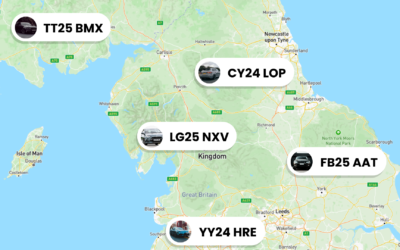Driver Retention Strategies for Fleet Managers
Driver retention is one of the most pressing issues affecting margins, safety and customer satisfaction in modern fleets. As a fleet manager, you’re juggling recruitment costs, scheduling headaches and the need to keep experienced drivers behind the wheel. This guide lays out practical, operational and cultural strategies you can implement today to reduce turnover, improve safety and boost performance. Read on for actionable steps you can apply to your fleet this quarter.
Why Driver Retention Matters
Business impact of turnover
High turnover carries direct costs — recruitment fees, onboarding time and training — and substantial hidden costs such as lost productivity, mistakes from inexperienced staff and reduced route efficiency. For many operators, the true cost per lost driver can be several months’ wages when you factor in hiring, training and reduced utilisation. Prioritising driver retention protects your bottom line and keeps operational KPIs steadier.
Safety and service continuity
Experienced drivers know the routes, the customers and safe practices. When you retain drivers, you reduce incident rates and improve on-time performance. A stable workforce also fosters a stronger safety culture — drivers familiar with company procedures are more likely to follow them and engage in peer coaching, which directly reduces accidents and claims.
Key retention KPIs to track
Track metrics such as turnover rate, average tenure, time-to-fill vacancies, driver satisfaction scores and incident rate per driver. These KPIs help you spot retention issues early and justify investments in training, equipment and wellbeing programmes.
Competitive Compensation & Benefits
Pay structure and incentive design
Compensation must be fair and transparent. Consider a mix of base pay plus performance incentives that reward safety, on-time delivery and fuel-efficient driving. Use short-term bonuses for hit targets and longer-term rewards for tenure to align behaviour with retention goals. Remember: drivers value predictable income and clear paths to increase earnings.
Benefits and non-monetary perks
Benefits like health cover, pension contributions and paid leave matter — but so do lifestyle perks. Meal stipends, flexible home-time guarantees, tuition assistance for licences and help with night-time childcare demonstrate you understand the pressures of driving jobs. Small non-monetary perks often have outsized effects on loyalty.
Market benchmarking and pay transparency
Regularly benchmark pay against local competitors and be open with drivers about pay bands and progression. Transparency builds trust. Use market data to ensure your offers are competitive and communicate changes clearly during reviews and onboarding.
Scheduling, Operations & Equipment
Predictable scheduling and route optimisation
One of the leading causes of dissatisfaction is unpredictable hours and excessive time away from home. Use route optimisation tools and fair rota design to provide consistent home time. If you’re exploring telematics or route-planning systems, our post on AI-Driven Telematics Route Optimization for Fleets can help you evaluate solutions that reduce driver stress and improve utilisation.
Fatigue management and fair hours
Implement duty-hour policies, enforce rest breaks and monitor overtime. Fatigue management should be part of your safety programme and your retention strategy — drivers stay where the employer respects limits and prioritises wellbeing. Consider predictable shift patterns and rotation policies to avoid chronic burnout.
Vehicle quality and equipment ergonomics
Drivers notice poor gear. Reliable, comfortable vehicles, regular maintenance and modern in-cab tech reduce frustration and downtime. Invest in high-quality seats, easy-to-use telematics and dashcams — and when you mention Dash Cameras, emphasise how they protect drivers and reduce false claims. Fast maintenance turnarounds are also crucial: a vehicle stuck in the workshop is a driver left idle and demoralised.
Training, Career Paths & Recognition
Ongoing training and upskilling
Structured onboarding and ongoing training increase competence and confidence. Offer refresher safety courses, defensive driving and tech training so drivers can use systems that save them time. Investing in skill development improves retention because drivers see a future and gain pride in their work.
Clear career pathways and internal mobility
Map out progression routes — senior driver, trainer, fleet supervisor or depot lead — and communicate them during reviews. Internal promotions reduce hiring costs and motivate the team. Encourage cross-training in operations or maintenance for drivers interested in broader roles.
Recognition and incentive programmes
Recognition programmes build loyalty. Combine tangible awards (spot bonuses, tenure pay increases) with public recognition (monthly awards, newsletters). Tie incentives to safety, reliability and customer feedback so the whole organisation understands and celebrates great performance.
Communication, Culture & Wellbeing
Driver voice and feedback loops
Give drivers a platform to speak up: regular surveys, driver advisory councils and structured check-ins help you identify issues before they escalate. Act on feedback quickly and communicate changes back to the team — when drivers see action, trust grows and driver retention improves.
Mental health and wellbeing supports
Long hours and isolation can take a toll. Provide Employee Assistance Programmes, access to counselling and fatigue support resources. Consider peer support schemes and wellness challenges that suit mobile workers. Wellbeing is not a soft benefit: it’s central to safety and retention.
Onboarding and cultural integration
First impressions count. Use structured onboarding that sets clear expectations, introduces drivers to colleagues and embeds your safety-first culture. A welcoming start reduces early churn and establishes the norms that keep drivers engaged long-term.
Halfway through building a stronger retention plan? If you want to see how modern telematics and driver engagement tools can help, book a demo with Traknova to explore tailored solutions for your fleet.
Conclusion
Reducing turnover is a multi-faceted challenge that demands operational changes, cultural shifts and targeted investments. Focus on predictable scheduling, competitive compensation, quality equipment and a culture that listens to drivers. These measures reinforce safety, cut costs and make your fleet a place drivers want to stay. For hands-on support, Traknova’s solutions can help with tracking, driver coaching and data you can act on immediately. Book a demo or contact us to discuss a bespoke retention plan for your operation.
FAQs
What is a good target turnover rate for fleets?
Targets vary by sector, but many operators aim for an annual turnover below 20%. Use baseline measurement for your fleet and set incremental reductions — e.g. 5% improvement in the first year — paired with KPI tracking.
How quickly should I act on driver feedback?
Prioritise actions within 30 days and communicate progress to drivers. Quick wins (schedule tweaks, small perks) build momentum while you plan larger changes like pay reviews or tech rollouts.
Which investment has the best ROI for retention?
Predictable scheduling and improved vehicle availability often deliver the fastest ROI. Equally, investments that improve driver comfort and reduce downtime — such as reliable maintenance plans and ergonomic upgrades — show strong retention benefits.
Can telematics help with retention?
Yes. Properly implemented telematics can reduce route stress, improve fairness in workload and provide coaching data that helps drivers improve without punitive measures. See our Telematics Adoption Playbook for Fleet Managers for practical roll-out advice.
How do I measure the success of retention initiatives?
Track turnover rate, average tenure, time-to-fill, driver satisfaction scores and incident rates. Tie these to cost metrics like recruiting spend and downtime to calculate ROI on retention programmes.
We’d love your feedback. Did this article help you identify new actions you can take this month? Please share on social media if you found it useful and leave a comment below — what’s the single change you’ll prioritise to improve driver retention in your fleet?
Need tailored help? For a personalised consultation or to book demo Traknova’s fleet solutions, visit our site. If you prefer, contact us directly and we’ll arrange a call.










